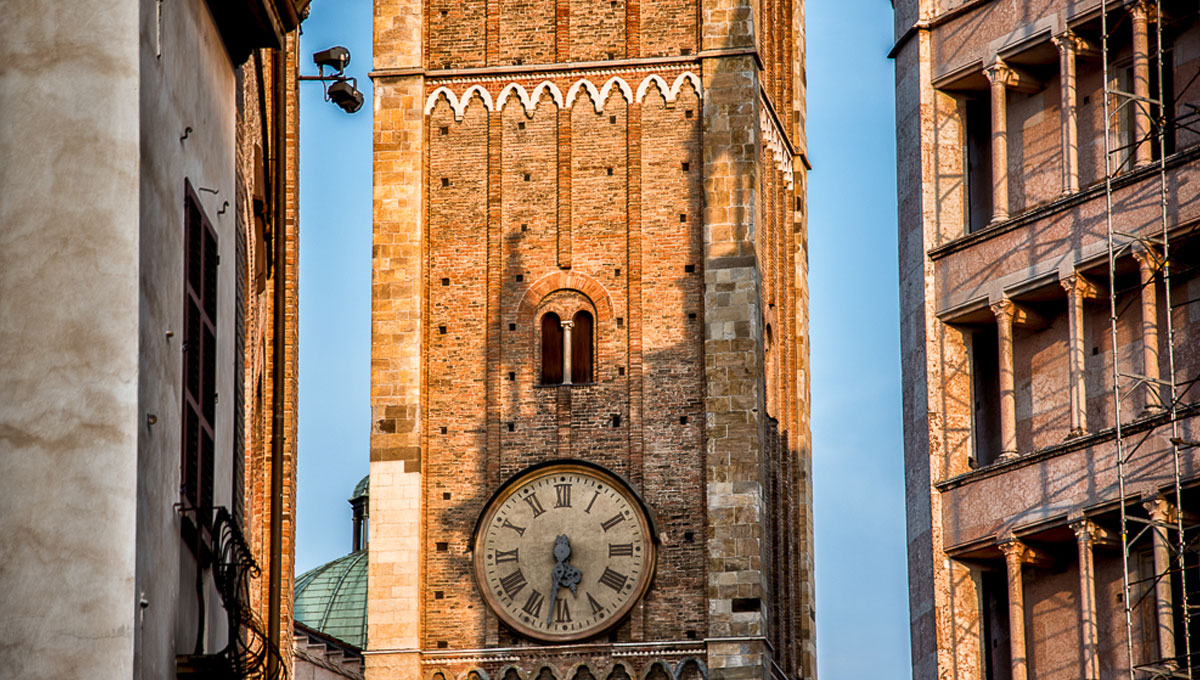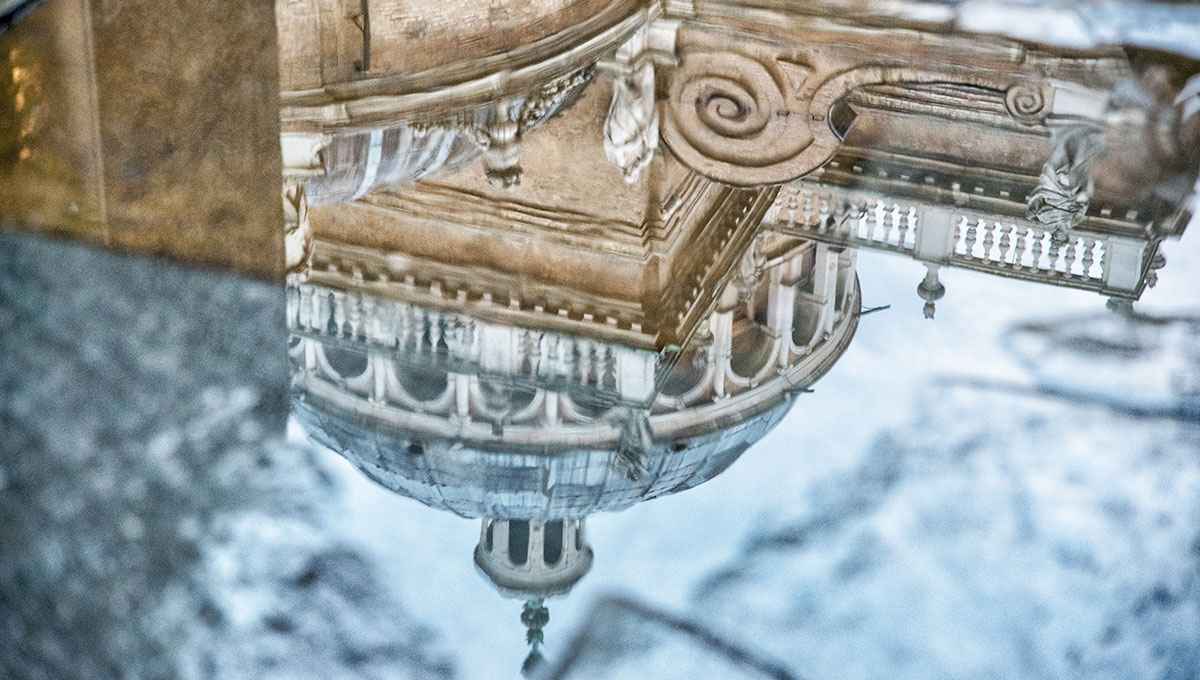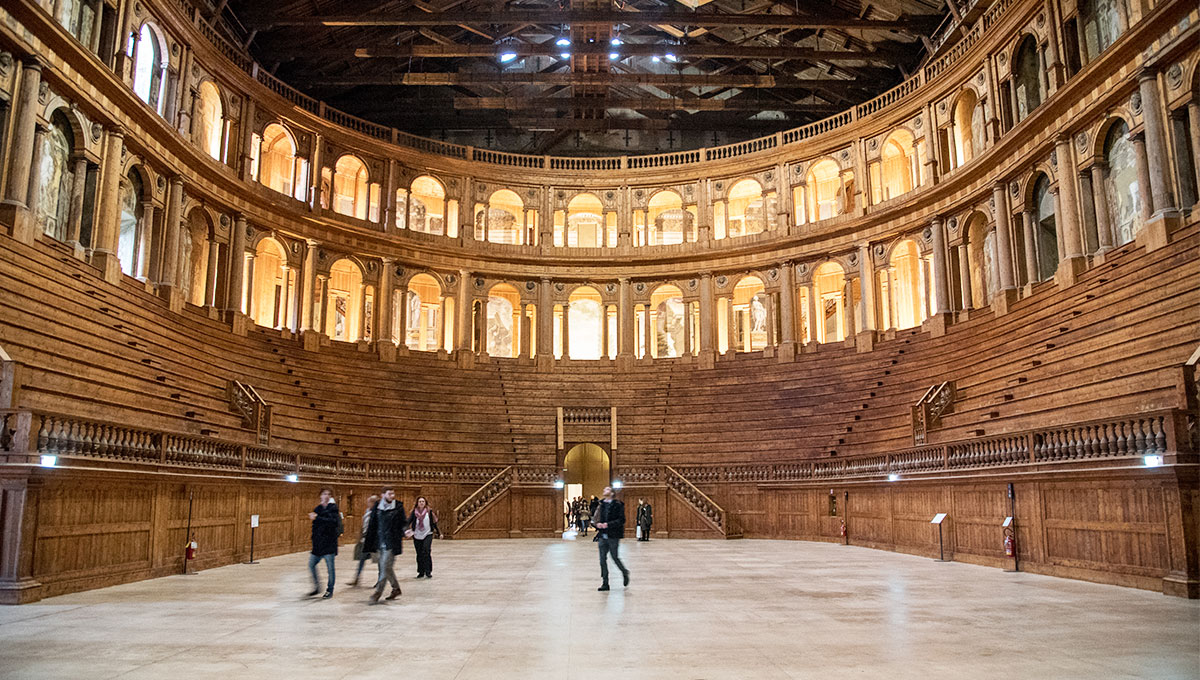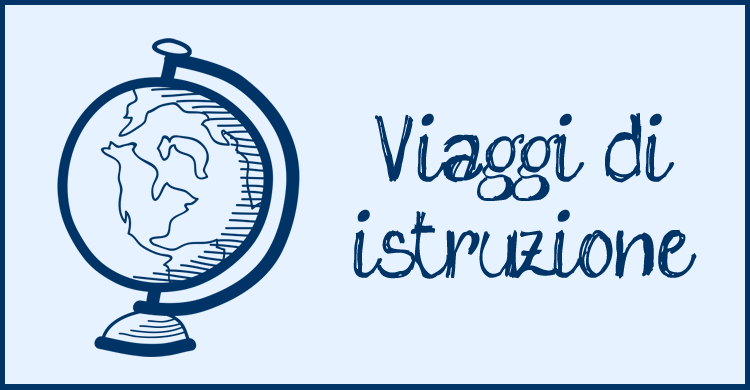Displaying items by tag: art
The Ricci-Oddi modern art gallery recently rose to prominence after the discovery of the Portrait of a Lady by Gustav Klimt, stolen from the collection in 1997.
Opened to the public in 1931, it tells us a story of pure love and passion for contemporary art. It is housed in the building on purpose created by its founder, Giuseppe Ricci Oddi, as a "temple" dedicated to contemporary authors not or little known at the time.
Today visitors can enjoy an overview of Italian and European art from the Romantic period to the 1940s.
Among the artists: Fattori, Hayez, Signorini, Bocchi, Boldini, Boccioni, De Pisis, Sartorio, Segantini… and the recovered Klimt, one of the only 3 paintings by the Austrian artist on the Italian peninsula.
If you want to travel through time, you have to walk along these corridors.
A path from the Roman vestiges to the splendours of the Dukedom: this is the Estense Gallery of Modena.
It is just the marble portrait bust of Francesco I by Gian Lorenzo Bernini that welcomes us.
The Duke looks far away while the wind lifts up his cloak.
Thanks to the talent of Bernini it appears to be made of soft fabric. We forget that it is carved!
The Gallery houses also paintings and collector’s items. The musical instruments are amazing.
The carving decoration applied to violin making has incredible effects, almost exaggerated.
Stunning the famous Estense harp, made in 1581 and played in honour of Margherita Gonzaga by a female ensemble.
Palazzo Farnese in Piacenza is the current seat of the Musei Civici (City Museums).
Theatre of the brutal murder of the Duke Pier Luigi Farnese, this historic building has become a huge box for masterpieces and precious objects like the Etruscan Liver, the very sweet Botticelli Tondo (rounded painting), the ducal frescoed apartments and much more.
Don’t miss the giant basement where you’ll discover the secret life of the court.
Right there you will find the Carriage Museum, second only to that of the Quirinale Palace in Rome. It takes us (this verb fits perfectly...) throughout the history of the European way of life from 18th century to the Modern Age.
An important recognition has brightened the summer of 2021 throughout the Emilia Romagna region.
UNESCO has confirmed the uniqueness of the arcades of Bologna, architectural structures that cross the city for 62 km, 40 of which in the old town centre, declaring them a World Heritage Site.
Born in the Middle Ages as building abuses in order to acquire living space, they are now meeting points, alternative pedestrian routes, protection from bad weather.
It is said, in fact, that a true bolognese is able to cross the city from one side to the other on a rainy day without getting wet!
They shelter from rain and snow but they also shelter from the sun!
They work as wonderful unusual routes for our guides during our winter visits in the beautiful city of Bologna.
If they were to shoot the Italian version of ‘Night at the Museum’, this would be the appropriate venue. Rhinos, giraffes, lions, stuffed bears seem to be just waiting for the museum doors to be closed to come to life again.
The original nucleus of the Civic Museums of Reggio Emilia began, in fact, with the purchase of Lazzaro Spallanzani's naturalistic collection and expanded following different lines: historical, scientific, and artistic.
There is so much to see, including nineteenth-century and modern lay-outs, all the way to interactive spaces.
Two suggestions: let yourself be amazed by the barbaric Roman treasure and take your time to admire the section dedicated to the Reggio Emilia photographer Luigi Ghirri. Themes that are chronologically distant but representative of the history of Reggio Emilia.
Known as the largest in Europe, the Franco Maria Ricci Labyrinth is also an amazing piece of architecture, designed by Pier Carlo Bontempi, and an unusual art collection, the result of the visionary dream of patron and publisher Franco Maria Ricci. The entire structure, container and content, is an expression of his personal taste.
An experience that would not be complete if we were not willing to challenge the bamboo corridors of the Labyrinth, a place where you lose yourself to find yourself again.
The Villa dei Capolavori (Masterpieces Villa) of the Magnani-Rocca Foundation, on the hills a few kilometers from Parma, houses the prestigious Luigi Magnani art collection, the subject of our guided tour.
The works include masterpieces by Gentile da Fabriano, Filippo Lippi, Carpaccio, Dürer, Tiziano, Rubens, Van Dyck, Goya and, among the contemporaries, Monet, Renoir, Cézanne, up to De Chirico, De Pisis, Morandi, Burri.
The Foundation also occasionally organizes temporary exhibitions that enrich the guided tour.
A castle erected in the 14th century and still belonging to the Meli Lupi family, it is one of the most sought after residences in the region and certainly the richest in original furniture and objects.
Nowhere like in Soragna you can breathe the air of an ancient family, rich in history and tradition.
It is advisable to devote a whole day to the village of Soragna to tour, besides the castle, the Synagogue and the Jewish Museum Fausto Levi , the Church of Saint James the Major, the Parmesan Museum and the Museum of Peasant Civilization.
The “Little Versailles of the Dukes of Parma” was the summer residence of the Farnese, Bourbons and Marie-Louise of Austria. Today we can visit the rooms of the noble floor, the private apartment of Duke Ferdinand, the Ducal Chapel of Saint Liborius and the park.
The complex, which is being restored, is of all castles that which is most related to the history of the duchy and the city of Parma. It is rich in histories and anecdotes fed by the personages who lived there, such as the Duchess Babette, the Duke Ferdinand de Bourbon, the Duchess Marie-Louise. Here is a curiosity: did you know that the great fountain of the Ducal Park of Parma used to be in the garden of the Palace of Colorno a century ago? And what destiny had the Palace after the Unity of Italy? Come and discover the reason for this curious move during a tour that will surely surprise you.
Famous for its beautiful moat, the castle that belonged to the Sanvitale houses two jewels: the “Optical Chamber” located in a tower and, on the ground floor, the small room decorated with frescoes of Parmigianino representing scenes from the life of Diana and Actaeon, taken from Ovid’s Metamorphoses. The quintessential 16th-century painting, the remarkable artistic quality of these works and the complexity of their interpretation never ceases to enchant visitors and academics.
To complete the tour, we cannot miss a stroll through the characteristic alleys of the village or having visited the Sanctuary of the Blessed Virgin of the Rosary which dates back to the 17th century and whose 1615 wooden statue of the Virgin has been the subject of great devotion and pilgrimages for more than four centuries.
A visit suitable for groups and families that offers a glimpse of the quiet and placid landscape of the "Bassa", the area near the river Po, which is distinguished by the presence of beautiful castles and characteristic villages. Winter fog and summer heat are fundamental ingredients for some typical local products such as Culatello di Zibello and Spalla Cruda di Palasone and are part of the charm of this territory that has inspired musicians such as Giuseppe Verdi and writers such as Giovanni Guareschi.
A tour in close contact with nature, thanks to the presence of the main embankment that runs along the river bed and that is passable for long stretches.
Among the places not to be missed, included in our itineraries, are the Rocca di Fontanellato, the Rocca di Soragna, the Castle of Roccabianca, the Castle of San Secondo and the Labyrinth of Masone.
Standing on its outcrop of the first hills of Modena, overlooking the Panaro Valley, the “Rocca” is among the most interesting examples of fortified architecture in Emilia. Standing on its dominant outcrop of the first hills of Modena, the Panaro Valley, the “Rocca” is among the most interesting examples of fortified architecture in Emilia. Although it was mentioned in documents from the 12th century, it was under the domination of the Este family and the investiture of Uguccione Contrari that the castle became a refined manor house.
Its imposing mass is softened inside thanks to the frescoes among which are those of the Chapel of Uguccione, an international Gothic jewel defined by the historian Carlo Arturo Quintavalle as “one of the most vivid and intense experiences among the Emilian works of the period” (A.C. Quintavalle, I freschi di Vignola e la pittura emiliana del primo Quattrocento, in "Arte Antica e Moderna", 1962).
The classic itinerary winds through the old town, touching the Ducal Palace which belonged to the Este, the area of the ancient Jewish Ghetto and the Synagogue, the Piazza Grande with the Town Hall and the Theater named after the great tenor Luciano Pavarotti.
The marvelous Cathedral of San Gimignano, considered a masterpiece of the Romanesque style, is a "book of stone" that, with an extraordinary sculptural decoration that extends over the façade, portals, capitals and metopse, has been telling the fantastic imaginary of the Middle Ages for over a thousand years; adjacent is the Ghirlandina tower . Both monuments are evidences of medieval history and, due to their inestimable value, belong to the UNESCO World Heritage Site.
Our classic itinerary includes Piazza Maggiore, with the Palazzo d'Accursio and the Basilica of San Petronio, crosses the Mercato Vecchio (Old Market) with a stop at the Archiginnasio and the Church of Santa Maria della Vita and arrives at the Two Towers. Not to be missed are the complex of the Seven Churches in Piazza Santo Stefano and the church of San Giacomo Maggiore in the university district.
At the end of the tour, a peek at the small window of Via della Piella is a must, revealing how Bologna was once... navigable!
Bologna also offers a very rich pictorial heritage, which ranges from the masters of the sixteenth century between the Renaissance and Mannerism, to the school of Carracci, Guido Reni and Guercino.
The itinerary allows you to retrace the traces of one of the greatest female figures of the medieval era, Countess Matilda di Canossa. Between the 11th and 12th centuries Matilda ruled a powerful state, which from Mantua reached almost as far as Rome, defended by a fortified system of castles and towers. Many of these places are now in ruins, but the territory still preserves the traces of that glorious past.
Even the names of the places evoke events and episodes of history: Canossa, very famous for the meeting between Henry IV and Pope Gregory VII in 1077, although in ruins it still stands mighty on the high cliff that dominates the horizon and a landscape made even more suggestive by the presence of the gullies.
Bianello
The only castle still visible of the fortifications that stood on four hills dominating the current town of Quattro Castella, where, every year, the appointment of Matilda as vicar of Italy by the Emperor Henry V. episode is represented through the Matildic Historical Parade of Quattro Castella at the end of spring.
Carpineti
Another mighty castle today reduced to a few ruins but immersed in a breathtaking landscape, still rich in suggestions due to the presence of tower-houses and ancient parish churches.
Rossena
Recognizable by the red color of the rock on which it is placed, the castle of Rossena has been preserved over time, retaining its mighty original appearance. Not far away, reachable on foot, stands the Rossenella watchtower, which was part of the defensive system of the Matildic territory.
Other castles and residences outside the city
Montecchio : built in the era of Matilde, the castle retains its medieval appearance. The itinerary includes a visit to the underground and the ascent to the Torrione.
Scandiano : the poet Matteo Maria Boiardo was born in the castle, where Francesco Petrarca, Calvino and Pope Paolo III Farnese stayed. Giovan Battista Aleotti gave it its present shape and the Este family transformed it into an elegant mansion.
Correggio : here is the splendid Palazzo dei Principi, home of the da Correggio, lords of these lands in the Renaissance era. It is accessed through the elegant sixteenth-century portal.
Novellara : from medieval fortress to noble residence under the Gonzaga family, the Rocca di Novellara, with richly decorated grotesque rooms, houses a museum that preserves splendid 16th century apothecary jars, a small theater of the nineteenth century and works by Augusto Daolio, unforgotten leader of the “I Nomadi” complex.
Guastalla : the Palazzo Ducale, founded in the fifteenth century, reached its maximum splendor in the second half of the sixteenth century, under Ferrante II Gonzaga. The building is currently undergoing restoration.
The itinerary in the historic centre of Reggio Emilia winds its way through narrow streets, palaces and places of worship with magnificent architectures, such as the Sanctuary of the Beata Vergine della Ghiara, which houses a fresco considered miraculous depicting the "Madonna adoring the Child". A church that is a true example of Emilian artistic production of the time, containing works by Alessandro Tiarini, Orazio Talami and Guercino.
The walk then leads to Piazza Grande, now called Prampolini, overlooked by the Cathedral of Reggio Emilia, where you can admire sculptures by Bartolomeo Spani and Prospero Sogari, the Baptistery and the Town Hall, which houses the prestigious and famous Sala del Tricolore (Tricolour Hall), now used as the Town Council Chamber.
Particularly striking and historically important is the Basilica di San Prospero, dedicated to the patron saint of the city. Inside you can admire a splendid cycle of frescoes by Camillo Procaccini dating back to the late 17th century and wooden stalls by Cristoforo and Lorenzo da Lendinara.
If you have enjoyed learning about the basics of Parma and you still have a lot of desire and a little time to spend in the city and not in its province, you have a choice of several major attractions. Depending on your interests and curiosity, we will be able to concoct the dream program to spend an unforgettable day in the city centre.
The Chamber of Saint Paul:
between sacred and profane, the ceiling painted by Correggio is an illusory pictorial rebus that is still awaiting a final solution…
The Diocesan Museum:
provides the opportunity to see the original works of Benedetto Antelami and the traces of the past discovered in the basement of Piazza Duomo
Il Museo Archeologico:
with the remains of the Roman Bridge, it testifies to the city’s past, from the beginning of its foundation. Note the Tabula Alimentaria, of fundamental importance, found at Veleia in 1747.
The Palatina Library:
a treasure trove of 18th-century Parmesan knowledge and elegance, enriched with 19th-century rooms and extraordinary collections of illuminated manuscripts, prints and ancient volumes.
The National Gallery:
In addition to the Farnese Theatre, it houses the masterpieces of the territory, the works of Correggio and Parmigianino, the portraits of the Dukes and the “Scapigliata” of Leonardo da Vinci. The museum facility of one of the most important cultural hubs of Emilia-Romagna is very interesting.
The Glauco Lombardi Museum and the Regio Theatre:
the priceless heritage of the Duchess Marie-Louise of Austria, represented by objects of everyday life, furniture and art collections, is gathered at the Glauco Lombardi Museum. The Regio Theatre is the unmissable destination for opera lovers.
The Sepulchre of the Farnese and Bourbons
in the crypt of the Church of the Steccata: the tour of the crypt is part of the exhibition rout of the Constantinian Museum of the Church of the Steccata, which provides a glimpse of the city’s life, linked to the prestigious Constantinian Order of Saint Georges.
The Library of Saint John the Evangelist,
on the first floor of the monastic complex consisting of the cloisters, the grocery and the Saint John Church, gathers together ancient knowledge in a magnificent structure from the second half of the 16th century. A place of meditation and study, it retains a cycle of partially unpublished frescoes to be observed while savouring every detail.
Museums – the Stuard Pinacoteca:
Along a chronological route within the ancient walls of the Benedictine convent of Saint Paul there are exhibits of archaeology pieces, sculptures, paintings, drawings and many other works. The room dedicated to Amedeo Bocchi and the famous “Greyhound” of Parmigianino is remarkable.
The Opera Museum and the House of Sound
These museums testify to Parma’s deep connection with music: while the House of Music houses the Opera Museum, which covers the entire history of opera in Parma from the 17th to the 20th century, the House of Sound provides a curious itinerary through the technological inventions that have allowed reproduction of sound from the end of the 19th century to the present day.
The Oltretorrente,
a popular district rich with history: the Church of Santa Croce on the Via Francigena, the old hospital, the spectacular Annunciation Church.
The Palazzo del Giardino,
a jewel in the centre of the Ducal Park, presents a fabulous cycle of frescoes from the Farnesian period.
Recalling the city’s Roman origins, it was founded in 183 BC, like its neighbour Modena, and it remains above the route of the Via Emilia and the ancient forum that has today become the still very lively Piazza Garibaldi.

The most visible monumental footprint is that left by the Middle Ages, in particular on the magical Piazza Duomo. This square is one of the most beautiful and romantic places in Italy, framed by the bishopric, the Santa Maria Assunta Cathedral and the baptistery. These imposing works date from the 11th and 12th centuries and are marked by the seal of Benedetto Antelami, author of the baptistery. If you look up into the cupola of the Duomo, the gaze is lost in the thousand characters painted by Correggio, an indispensable figure in our Renaissance, whose works are also found in the neighbouring monastery of Saint John the Evangelist.
The cultural richness of the 16th century is illustrated in all its splendour at the Minor Basilica of Santa Maria della Steccata and in the complex of Saint John the Evangelist.

The second half of the century saw the birth, under the aegis of Pope Paul III Farnese, of the famous Duchy of Parma and Piacenza.
The itinerary connects the monumental complex of La Pilotta with the Ducal Park. The Farnese Theatre, built in 1618 by Ranuccio I, is a key step in the city’s tour.

The arrival of the Bourbons in 1734 marked the European cultural turning point of the city. The following decades saw the birth of the Palatina Library and the Bodoni Printing House, while the city was covered with neo-classical buildings of French taste.
The international aura emerged with Philippe de Bourbon and his wife Louise Elisabeth, and grew up with the Duchess Marie-Louise of Austria who governed the city from 1816 to 1847, founded the Regio Theatre and left an unforgettable memory in the hearts of many Parmesans. It was at this time that the young Giuseppe Verdi asserted himself and that the talent of Arturo Toscanini flourished.

